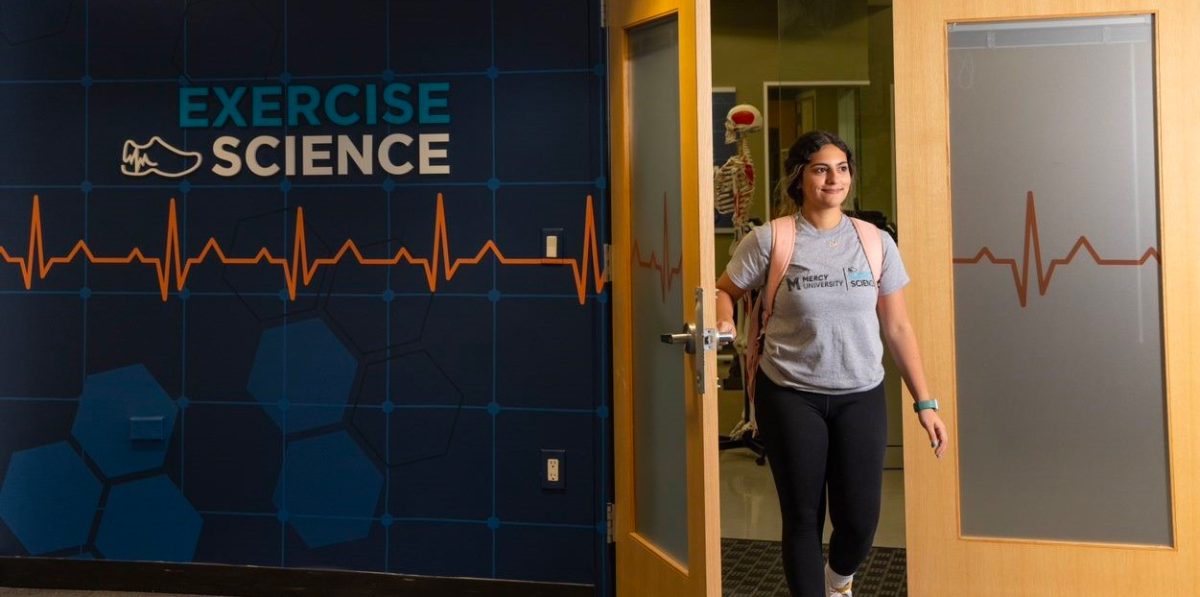Several colleges and universities have shut down post-pandemic for various reasons, including lack of enrollment. However, Mercy University has experienced the opposite. The incoming class for 2023-2024 is expected to be the largest in over a decade, with an estimated 1,110 students across the university’s three campuses.
For the past five years, Mercy had 950 students enrolled as freshmen. The fall semester of 2021 saw that number fall under 900 for the first time in a decade. The first fall semester of the pandemic era was the next largest enrollment class to be seen at just over the 1,000 mark.
In addition, 250 first-year students enrolled at the Manhattan campus, setting the record for the most incoming first-year students that campus has seen.
Despite the challenges posed by the pandemic, Mercy seemed to emerge more robust than ever. All departments have worked hard to make the University a top choice for incoming students.
The National Student Clearinghouse reported that undergraduate college enrollment decreased by 8 percent nationwide from 2019 to 2022. Even after returning to in-person classes, the decline continued. According to the U.S. Bureau of Labor Statistics, the college-going rate has been steadily declining since 2018, and the drop in enrollment during this period is the steepest on record.
With private education and small class sizes, Mercy can offer students a sense of belonging.
Freshman Cyress Medina feels that he picked the perfect school for his college experience.
Medina said, “It feels like an actual community and not a big school where it is easy to feel lost.”
The size of the Westchester campus comforted him as he compared it to his high school experience at Sacred Heart in Yonkers, New York.
Mercy is committed to its students and offers resources for them including PACT, the learner center, the career center, Mav Market, and more. The variety of clubs and organizations has also attracted potential students.
The increase in applications allowed more students to be admitted to the school. Mercy’s marketing team plays a significant role in putting themselves on the radar for students.
Adam Castro, Vice President for Enrollment Management, mentioned the outreach to first-year students in high school to start their interest early. Instead of focusing on a senior class, like most colleges and universities, the recruitment team introduces Mercy to sophomores and juniors to build up Mercy’s inquiry pool.
Castro and the marketing team wanted Mercy to separate from other school’s marketing techniques. They wanted to focus on macro-marketing to get the most extensive reach possible. This strategy drew eyeballs to the school and increased the profiles as well.
One of the essential techniques the team used is large-scale marketing, which included billboards, bus ads, and any physical outdoor advertisement.
Castro said, “Mercy received its highest amount of applications for incoming freshmen for the fall semester, with over 9,800.”
Mercy College received the Seal of Excelencia for serving Latino students. It was the first private College in the U.S. and the first HSI in N.Y. to receive it. This year, 50 percent of accepted first-year students and 60 percent of committed students are Hispanic or Latino. The first-year class is 85 percent students of color, showcasing the college’s diversity.
Adding to the diverse demographic is the 24 percent of black and white students attending Mercy.
The total enrollment at the university stands at 8,615, and 70 percent are full-time undergraduate students with 70 percent female and just under 30 percent male.
Over the years, Mercy has seen many academic, athletic, and residential renovations to enhance the student experience. The most recent renovation is the front entrance to the Westchester campus and the currently under-construction pavilion.
As President Susan L. Parish said, “The university’s mission statement is to focus on student success and ensure that a college degree is attainable and affordable. Mercy prepares students for successful careers across six schools and has one of the region’s lowest tuition rates for any private, four-year university at about $22,000.”
The national average for a private 4-year institution’s average tuition and fees at a nonprofit college total $38,768 annually.
Mercy strives to improve retention rates, graduation rates and transitions into meaningful careers and will do anything to achieve this mission. Students who enroll receive one-on-one attention until graduation, making their enrollment in Mercy more attractive.
Services like PACT can help students who may struggle with financial aid and academics. Its mentorship program can help guide these students on the path they wish to be on.
Having different populations and cultures on campus is another reason students chose to attend Mercy this fall.
Freshman Jelanie Moreno said, “The diversity attracted me to attend this year. It made me feel welcome and confident that I belong here.”










